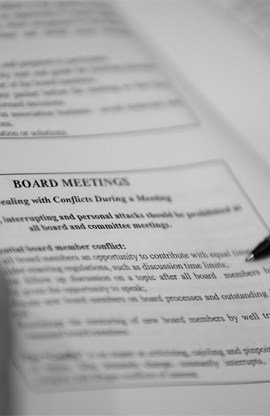The establishment, composition, function and scope of authority of the architectural or design review committee is typically set forth in the association’s CC&Rs. It is important for each member of the committee to be familiar with the relevant architectural/design provisions in the CC&Rs, along with any properly adopted architectural/design rules, so that the committee can function and render decisions appropriately.
Oftentimes, one member of the committee may frequently take the lead in regard to making decisions on architectural applications. That particular committee member may have experience and/or specialized knowledge that can be very useful and helpful. Nonetheless, it is vitally important to the integrity and proper functioning of the committee that its members work and make decisions collaboratively.
In a recent North Carolina case (Makar v. Mimosa Bay Homeowners Association, Inc., No. COA18-547 (N.C. Ct. App. Mar. 19, 2019), the Court of Appeals held that an architectural committee was not properly constituted, and its decisions were invalidated, because one member made all of the decisions, while the declaration clearly contemplated a committee comprised of more than one person. In Makar, the community was still under developer control, the developer appointed a manager to govern over the architectural review process, and that manager solely rendered a decision on the Makar’s architectural application. The Appeals Court determined that, not only did the declaration require the architectural committee to be comprised of more than one person, but the term “committee” connotes a decision-making body comprised of multiple individuals.
While Makar is not binding case law in Arizona, and while the exact fact pattern is unlikely to arise in your community, I strongly urge your community to review and adopt the Court’s description and sentiment of the term “committee”. As noted above, while one member of the committee may have a skill set or experience that naturally lends itself to the architectural review process, each member of the committee brings a unique background, experiences and opinions that should be shared and valued. Furthermore, active participation from each committee member and a commitment to majority decision making (as opposed to unilateral decision making) provides a necessary form of checks and balances within the committee.

